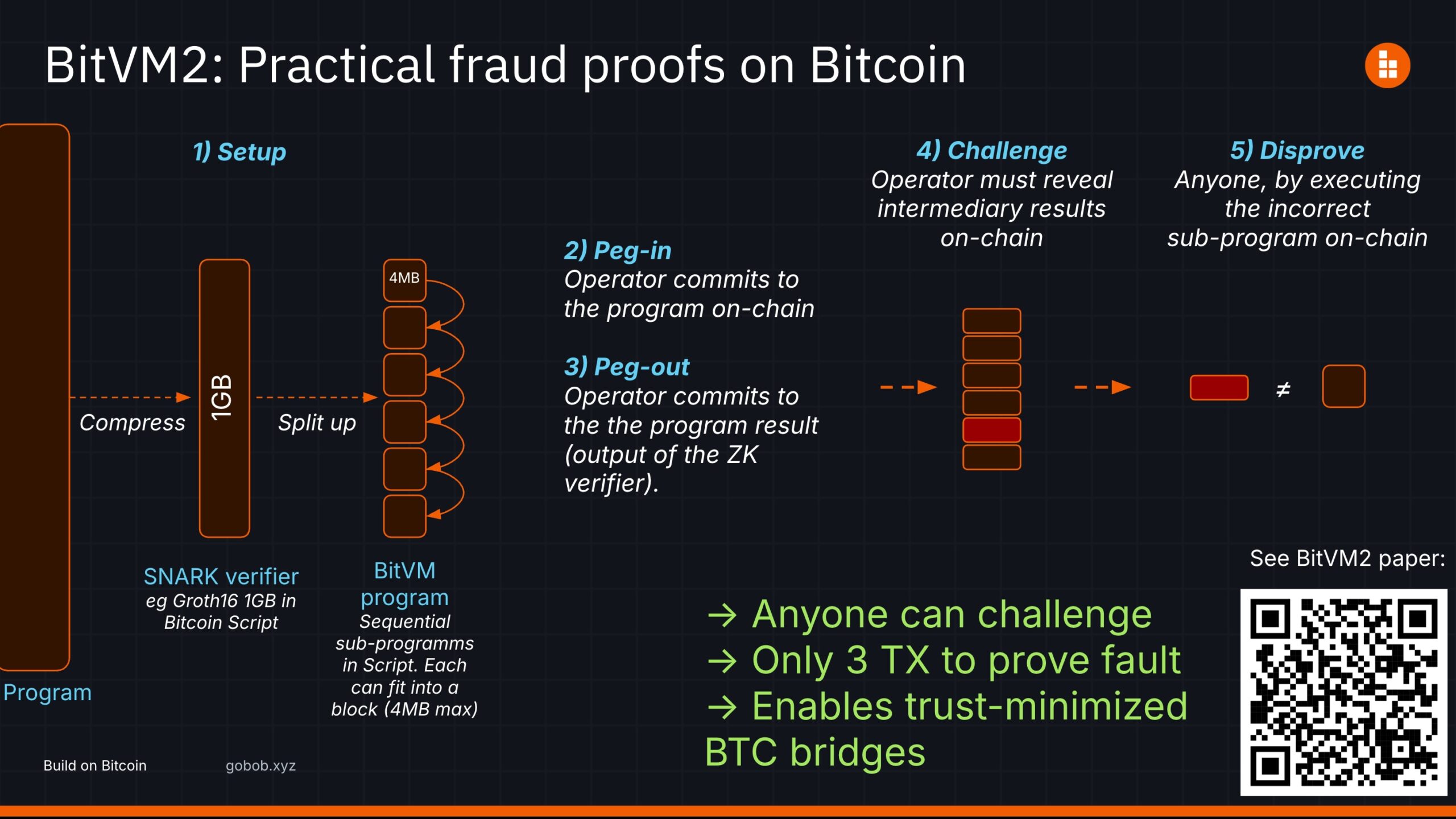This is part of the 0xResearch newsletter. To read the full editions, Subscribe.
Bitcoin enthusiasts often hear terms like “zk rollups” thrown around, but the reality is more nuanced. While Ethereum's zk pools rely on zero-knowledge proofs for trustless verification, Bitcoin's architectural limitations make implementing true zk pools a distant goal.
Misleading claims about Bitcoin's Layer 2 capabilities and assumptions of trust threaten to confuse users, and the Bitcoin creator community is working to clarify these issues.
Ethereum zk pools leverage the Ethereum mainnet (Layer-1) to verify cryptographic proofs directly on-chain. Bitcoin, with a 4MB block size and limited scripting capabilities, cannot accommodate computationally intensive validators. As Alexei Zamyatin, a core contributor to BitVM, explains, a zk block validator “simply wouldn't fit in the block.”
Projects like BitVM take Different approach,combines SNARK-based compression and optimistic verification. Instead of verifying proofs on-chain, BitVM breaks the program into smaller parts, each of which can be verified sequentially. This approach mirrors bullish groups like Arbitrum rather than Ethereum's ZK groups.

“The zk part stops at the compression stage,” Alexei notes. “Everything else is an optimistic, fraud-resistant system.”
The broader discussion around Bitcoin L2s goes beyond just pools. In a recent post, Janusz Grzegorz, founder of Bitcoin Layers, talked about the evolving definition of Bitcoin L2s. Initially, Bitcoin layers evaluated projects based on their claim to be “Bitcoin L2,” but this approach excluded meaningful activity such as Bitcoin-backed tokens on Ethereum L2s.
Janusz calls for a shift in focus to trusting assumptions rather than semantics. He suggests evaluating the bridges that support these systems regardless of whether they market themselves as a second language or not. These include protocols such as Rootstock, tBTC on Arbitrum, and others.
Grzegorz, known online as "Janusz," has also pointed to projects like Merlin and BitcoinOS as contributing to the confusion. Such projects often market themselves as zk pools on Bitcoin, despite lacking the infrastructure necessary to provide security guarantees on par with how the term "pools" is typically used. He warns users to scrutinize projects for real progress, such as distributed bridges or optimistic bridges, rather than relying on buzzwords.
For Zamyatin, education and transparency are key. By focusing on trust assumptions, clear definitions, and robust analytics, the Bitcoin community can better understand what is possible – and what is not. For now, zk pools on Bitcoin are still a misnomer, but innovations like BitVM show how Bitcoin can scale within its unique constraints.
To achieve Real zk accumulationsBitcoin will require a soft fork to enable the creation of the original zk validator. numerous New operating codes It is currently under consideration amid the latter pays To clarify the future roadmap for Bitcoin.
open Wiki style forum It allows interested stakeholders to express their preferences and justify their views. Zamyatin's team Building on Bitcoin (BOB) hasn't weighed in yet, but expects to soon.
“What's great about this effort is that it brings the rationale into one place — instead of Twitter fights or scattered threads, you can see the rationale for each individual's position,” Zamyatin said. “It makes it easier to evaluate proposals, summarize the pros and cons, and have meaningful discussions.”
Start your day with the best cryptocurrency insights from David Kanellis and Katherine Ross. Subscribe to the Empire Newsletter.
Explore the growing intersection between cryptocurrencies, macroeconomics, politics, and finance with Ben Strack, Casey Wagner, and Felix Goffin. Subscribe to the Forward Way Newsletter.
Get alpha straight to your inbox with 0xResearch Newsletter - Market highlights, charts, trade ideas, management updates, and more.
The Lightspeed Newsletter has everything Solana, in your inbox every day. Subscribe to Solana Daily News By Jack Kopenick and Jeff Albus.
Source link
